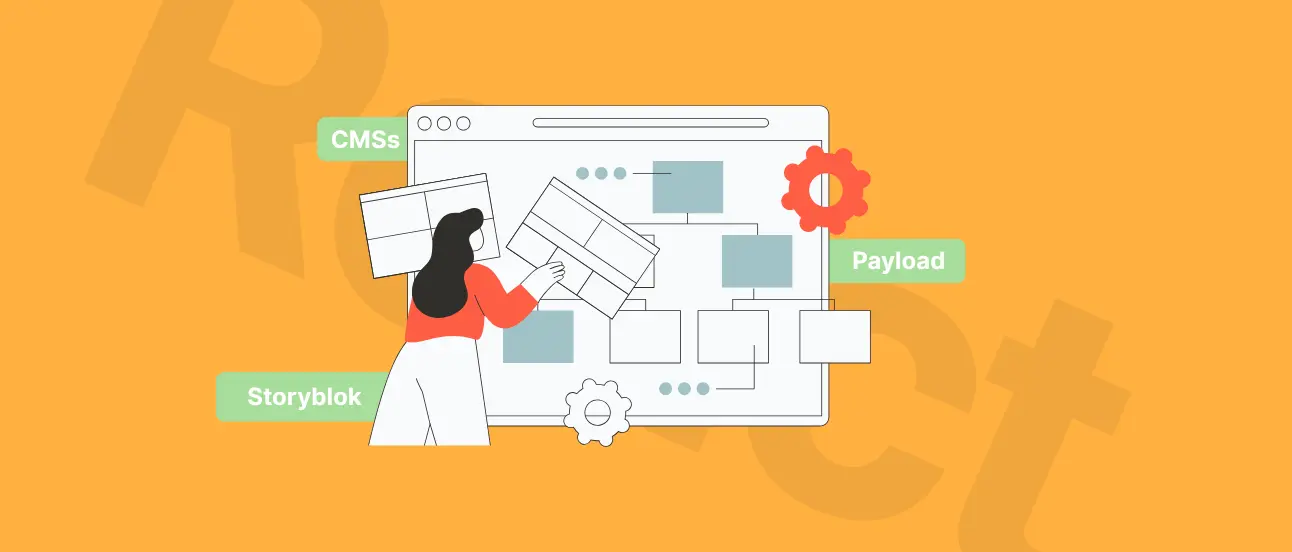Hydrogen or Next.js for Shopify in 2026 - Which Should Your Business Choose (and When)?
Choosing between Shopify Hydrogen and Next.js is a strategic business decision. Your choice defines speed to market, long-term flexibility, cost predictability, and even your brand’s ability to innovate.

In short
Choose Hydrogen if Shopify is your long-term home and you want fast time-to-market + lower, more predictable costs thanks to Oxygen hosting included in your Shopify plan. Hydrogen reduces time-to-value by minimizing custom build scope and external hosting contracts, which helps preserve cash and de-risks the first 90–120 days of a headless transition. Best for DTC brands going deep on Shopify features.
Choose Next.js if you need maximum flexibility and future-proofing across a composable stack (Shopify + CMS + PIM + search, etc.), want ISR/PPR for huge catalogs, and can accept higher initial cost/complexity in exchange for no vendor lock-in. You pay more up front to avoid future replatform costs and to enable multi-system growth (content, data, regions) without redesigning the storefront later. Ideal for enterprises investing in long-term flexibility and control.
Why Headless On Shopify?
Today’s shoppers expect instant load speeds, app-like UX, and seamless experiences across web, mobile, and even emerging channels like AR or voice. Traditional Shopify themes, while convenient, simply can’t keep up at scale, which hurts conversion and growth.
Headless architecture fixes this by decoupling your storefront’s frontend from Shopify’s backend, letting you craft experiences that are faster, smarter, and more flexible. Teams iterate faster, test more, and ship premium UX without backend friction.
The business benefits are hard to ignore:
Higher conversion
Every second faster boosts mobile conversion rates. Mobile users abandon sites that take more than three seconds to load. Traditional themes, bloated with third-party apps and inefficient code, struggle to meet these demands. A headless architecture lets you build a lean, fast storefront that loads in under a second.
Faster iteration and reduced long-term risk
Launch landing pages, campaigns, or A/B tests without backend risk. Companies using headless architectures are implementing new features faster than their traditional counterparts. When your marketing team wants to launch a flash sale landing page tomorrow, you can actually deliver it.
You can tweak the front end freely without breaking checkout or core commerce.
Personalization wins customers
With headless, you can create unique experiences for different customer segments without the constraints of a one-size-fits-all theme.

Not sure which path fits you?
Get a quick, honest recommendation from our Shopify experts. We’ll help you decide if Hydrogen or Next.js gives you the best ROI.
What Is Shopify Hydrogen and Who It’s For
Hydrogen is Shopify’s own headless framework, built on React and Remix. It’s tailor-made for one thing: building the best possible Shopify store.
You get prebuilt product components, cart logic, and checkout flows. You get streaming server-side rendering for near-instant load times. And you deploy on Oxygen, Shopify’s global edge hosting, already included in your plan.
It’s Shopify-first by design, and that’s a strength. You launch faster, manage less, and pay fewer unpredictable hosting fees. But once you commit, you’re in Shopify’s ecosystem. Deeply. Some apps may not work out of the box, and migrating later won’t be fun.
So, if your goal is simple, like “Let’s build the best possible Shopify store”, Hydrogen is your best friend. It’s fast, focused, and financially predictable.
Next.js: The “freedom-first” approach
Next.js, on the other hand, is the seasoned architect’s tool of choice. Created by Vercel, it’s a general-purpose React framework used by companies building anything from marketing sites to complex composable ecosystems.
It’s not Shopify-native, but that’s exactly why many enterprises love it. Next.js connects to any backend: Shopify, Sanity, Contentful, Payload, Algolia, you name it. It’s backend-agnostic, meaning your storefront can evolve as your business does.
And with features like Incremental Static Regeneration (ISR) and Partial Pre-Rendering (PPR), it scales beautifully, even with huge catalogs or content-heavy websites.
That flexibility comes at a price, though. You’ll need to build your own Shopify integration, maintain it over time, and host it separately on Vercel. But in return, you gain total control and freedom from lock-in.
Why Next.js stands out:
Ultimate flexibility: Plug into Shopify, Sanity, Contentful, Payload, Algolia, whatever your stack needs.
Superior performance at scale: ISR and edge caching can outperform most setups.
Massive community: Huge ecosystem of templates, libraries, and dev talent.
The trade-offs:
Higher upfront investment: You’ll build Shopify integrations and cart logic yourself.
Ongoing maintenance: You own updates and API compatibility.
Variable hosting costs: Vercel hosting adds another pricing layer on top of Shopify.
Hydrogen vs Next.js - A Business-Level Showdown
| Factor | Hydrogen | Next.js |
|---|---|---|
| Launch speed | Faster, need launch in <4 months; native Shopify components | Slower, 6+ months for development; manual API integration |
| Performance | Excellent (Streaming SSR + RSC) | Higher ceiling (ISR + PPR) |
| Flexibility | Shopify-only | Fully composable, backend-agnostic |
| TCO (Total cost of ownership) | Predictable - Oxygen hosting included | Variable - separate hosting & dev |
| Vendor lock-in | High | Low |
| Platform strategy | Committed to Shopify long-term | May change or add platforms |
| Team expertise | Limited React/headless experience | Strong JavaScript capabilities |
| Business model | Pure e-commerce focus | Commerce plus content/services |
| Best for | Shopify-first DTC brands | Enterprises needing flexibility |
| Competitive position | Competing on brand/product | Competing on technology/UX |
When to choose Hydrogen
Choose Hydrogen if your business is firmly committed to Shopify for the next 3-5 years. You're not exploring other platforms, you're happy with Shopify's feature set, and your growth strategy centers on maximizing what Shopify offers.
You need to launch quickly (seasonal peaks, competitor pressure).
You want stable, predictable costs (hosting included).
Your team is lean and you want less custom build work.
Typical fits: DTC fashion, beauty, CPG, lifestyle with simple catalogs.
Practical tips:
Audit app dependencies early (subscriptions, reviews, loyalty). Budget small custom features where needed.
Use Oxygen’s included hosting to handle traffic spikes without extra infra planning.
Hydrogen consolidates contracts (fewer vendors), simplifies InfoSec reviews, and shortens legal cycles. That often accelerates kickoff and reduces ongoing vendor management costs.
When Next.js Makes Sense
Choose Next.js if:
1. Your technology strategy extends beyond Shopify
You're using or planning to use multiple platforms, perhaps Shopify for US operations but a different system for Europe, or you need deep integration with enterprise resource planning (ERP) systems.
2. Content and commerce are equally important
Your business model relies heavily on editorial content, brand storytelling, or complex product information that requires a sophisticated content management system beyond what Shopify provides.
3. You're building for the long term
The additional investment in Next.js pays off when you consider a 5-10 year horizon where business requirements will likely evolve significantly.
4. Customization is non-negotiable
Your user experience requirements go beyond what any platform's standard components can deliver, and you need complete control over every interaction.
5. You're in these scenarios:
B2B commerce with complex pricing and approval workflows
Multi-brand or multi-region operations
Marketplace or platform business models
Businesses planning potential exits or acquisitions
Nanobébé needed a modern, high-converting store to match their global growth. We rebuilt their Shopify site with sleek UX and faster load times. This made shopping easier and more engaging for parents worldwide.
5/5
Clutch review
117%
increased performance
80%
reduced TBT

If your business is growing fast on Shopify, your playbook is different from a multi-region enterprise with ten systems to integrate. So, think in terms of strategy, not technology.
Expect a slightly larger or more senior in-house/partner team (platform architect + integrations engineer + performance/CRO) to fully realize Next.js’ benefits.
1. Shopify-centric, scaling fast
You live and breathe Shopify. Predictable costs matter. You want a top-tier store without a custom dev team juggling APIs - choose Hydrogen.
2. Composable, multi-platform enterprise
Shopify is one piece of a bigger ecosystem with CMS, PIM, and analytics tools. You need independence, not boundaries - choose Next.js.
3. Content-first, experience-led brand
You blend storytelling, editorial content, and commerce. You want every interaction to feel crafted, not templated - choose Next.js.
The Hosting Angle: Oxygen vs Vercel
Hydrogen runs on Oxygen, Shopify’s own global hosting network. It’s fast, integrated, and, best of all, already covered by your Shopify plan. Deployment is as easy as a Git push.
Next.js typically runs on Vercel, a performance powerhouse offering edge networks, serverless functions, and global caching. It’s fast, feature-rich, but usage-based. It’s fantastic… but billed separately.
Vercel (for Next.js)
Vercel is a powerhouse cloud platform for edge and serverless apps. You can expect best-in-class performance, but it introduces separate, variable monthly costs. Hosting is the hidden TCO driver in your headless strategy.
For high season, predefine caching/regeneration policies (ISR/PPR) and load-testing thresholds, so you don’t trade speed for stock accuracy under pressure.
When to Choose Which (Real-World Scenarios)
Shopify-centric DTC brand scaling fast
You want a premium store, quick launch, and predictable costs - choose Hydrogen. Why? Native parts + Oxygen hosting keep things simple.
Composable enterprise
You’re integrating CMS, PIM, and analytics, and Shopify is one part of a multi-service architecture - choose Next.js. Why: Backend-agnostic and future-proof.
Content-driven or design-led brand
Your site is half-magazine, half-store, with rich content and storytelling - choose Next.js. Why: Strong CMS integration and ISR/PPR for lots of content.
Performance-marketing heavy
If you need fast landing pages and quick tests on a tight budget, (usually) the best choice is Hydrogen. That’s because of faster time-to-value and predictable TCO.
But, in this case, you can also pick Next.js if those pages depend on a powerful CMS and many services.
Not sure yet or want a safe path? Some brands start on Hydrogen for speed and standardization, then introduce a Next.js front door later for multi-site orchestration. Plan for that path if it aligns with your 3-year roadmap.
Key Takeaways for Decision Makers
This isn't just a technology decision. Your choice between Hydrogen and Next.js reflects your broader business strategy and where you see your company in 5 years.
Both platforms can build exceptional experiences. Success depends more on execution than on which framework you choose. Either option, properly implemented, will dramatically outperform a traditional Shopify theme.
Consider total cost, not just development cost. Hydrogen's free hosting and reduced maintenance can save $50,000-150,000 annually for mid-market businesses. But Next.js's flexibility might save you from a $500,000 re-platforming project in three years.
Your team matters as much as the technology. A team experienced with Next.js might deliver better results with it than struggling with Hydrogen, and vice versa.
Plan for migration either way. Whether you choose Hydrogen or Next.js, have a plan for how you'll handle future platform changes. Technology evolves, and your choice today won't be permanent.
Do I Need Hydrogen or Next.js to Go Headless on Shopify?
Both Hydrogen and Next.js can deliver world-class Shopify storefronts. The real question is: “Do we want the best possible Shopify experience, or the most future-proof platform?” If it’s the former, Hydrogen is your fast track.If it’s the latter, Next.js is your long game.
And whichever path you pick, start small, pilot a single storefront section, measure speed, conversion, and cost. Compare page load times, conversion rates, development velocity, or hosting anf maintenance costs. Let the data decide.
Naturaily helps brands navigate this exact choice, building headless Shopify experiences that fit both your growth goals and your tech strategy. Ready to pick your path? If you share your goals (growth targets, stack constraints, budget), we’ll recommend a path and a phased plan you can take to procurement. Let’s talk!
FAQ
FAQ
Let’s plan your headless roadmap
We’ll map out your tech stack, budget, and growth goals, and show where Hydrogen or Next.js fits best.
More posts in this category

December 02, 2025 • 8 min read
READ MORESvelte in 2026: Why It’s (Still) a Big Deal - Svelte 5 Features, SvelteKit, Pros & Cons
Svelte 5 and SvelteKit offer a faster, simpler approach to building modern frontends. Here is what’s new, how the framework works today, where it fits in real projects, and when alternatives might be a better choice.

November 26, 2025 • 10 min read
READ MOREBest Headless CMS for React (2026): 15 Top Picks + When to Use Each
React works well with a headless CMS because it speeds up development, improves performance, and keeps content operations simple. You will see how platforms like Storyblok, Sanity, Hygraph, Prismic, Strapi, Payload, and Contentful integrate with React and Next.js, and what makes each one a better fit for different team sizes and needs.

November 21, 2025 • 11 min read
READ MOREBest Next.js Alternatives (2026): Which Framework Fits Your Project?
Next.js 15 is excellent, but not always the best choice. Astro, Remix, SvelteKit, Nuxt, Qwik, and TanStack Start outperform it in specific scenarios. We’ll walk you through when these alternatives make more sense and explain why they might be a better fit for your project.